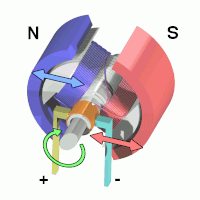
Photo from wikipedia
Abstract Design engineers are constantly striving to minimize part weight, maximize stiffness, reduce cost, and optimize material usage. In this context, the use of composite materials provides an advantage when… Click to show full abstract
Abstract Design engineers are constantly striving to minimize part weight, maximize stiffness, reduce cost, and optimize material usage. In this context, the use of composite materials provides an advantage when developing light-weight components because of their high strength to weight ratio and optimization potential. Most traditional topology optimization methods have been developed for isotropic materials and adapted to consider direction-dependent materials only to define the optimum shape based on the fixed properties. Nevertheless, due to its anisotropic nature, a unidirectional composite mechanical response is highly dependent on the laminate stacking sequence, which is typically specified after the shape of the components has been defined. Therefore, new methods that can concurrently account for the shape and laminate orientation are essential for designing optimum composite structures. This article proposes a new density-based methodology for performing simultaneous topology optimization and stacking sequence optimization of constant stiffness laminated plates. In order to effectively achieve simultaneous placement of material and laminate lay-up, lamination parameters are used as design variables. Feasible domain equations are defined for lamination parameters and a laminate database concept is used for retrieving the lamination angles. Multiple example problems are provided to demonstrate the applicability of the proposed approach.
Journal Title: Composite Structures
Year Published: 2021
Link to full text (if available)
Share on Social Media: Sign Up to like & get
recommendations!